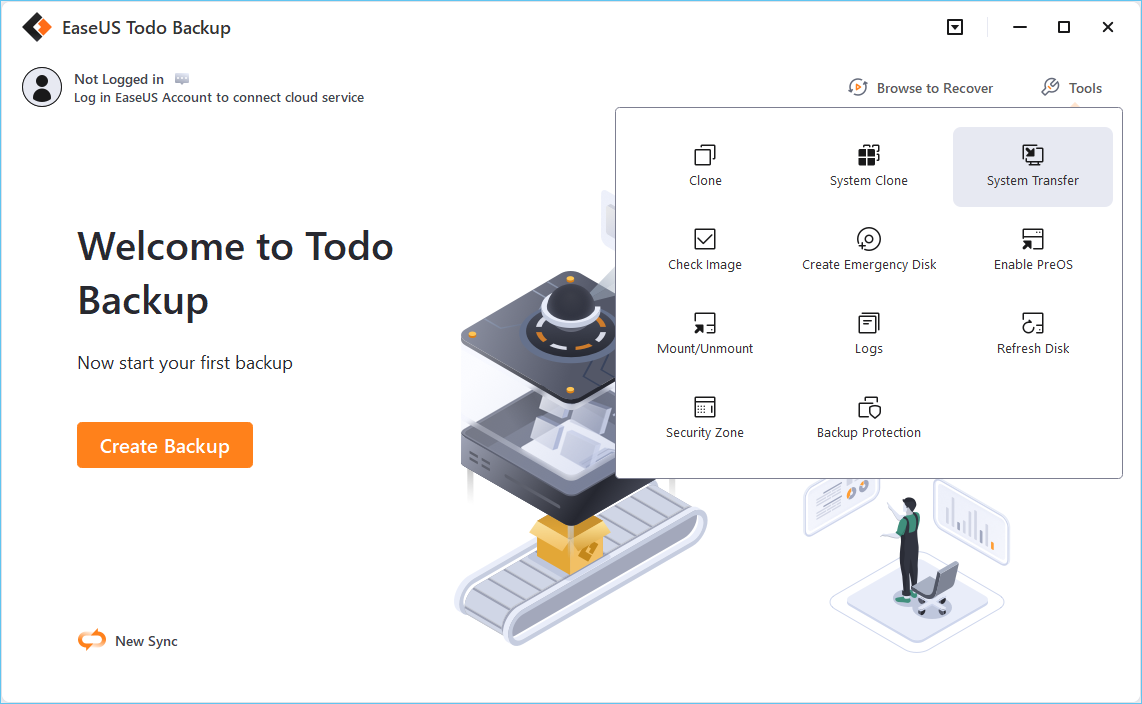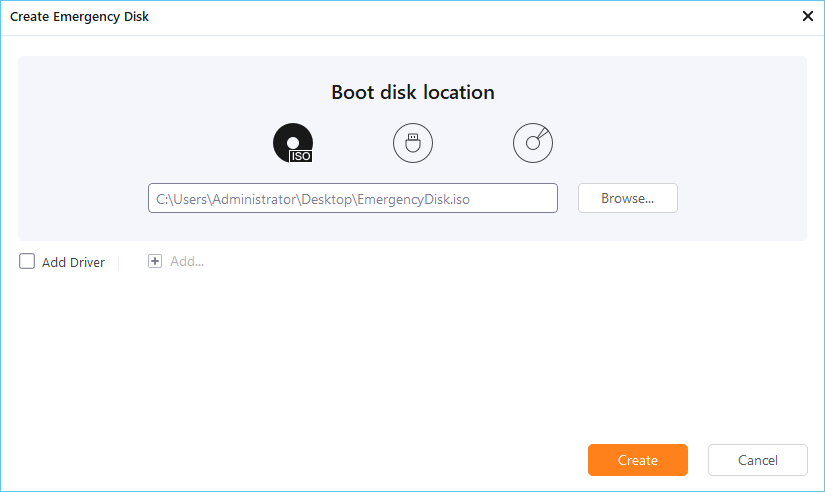Page Table of Contents
About the Author
Hot Topics
Updated on Apr 28, 2025
"I have absolutely no experience with Linux, and I desperately need to get my computer back and running again with Windows. How do I remove Ubuntu and reinstall Windows?"
How to Delete Ubuntu from Dual Boot Windows (2 Steps)
If you have installed Linux on its own partition in a dual-boot configuration, there's usually no easy uninstaller that will remove it for you. Instead, you need to delete its partitions and repair the Windows boot loader manually. Here are the steps to uninstall Ubuntu from dual boot.
| Workable Solutions | Step-by-step Troubleshooting |
|---|---|
| Step 1 - Delete the Linux Partition |
|
| Step 2 - Fix the Windows Boot Loader |
|
How You Install Ubuntu on Your Windows Computer
How you uninstall Linux depends on how you've installed it. If you installed Linux as the only operating system, you have to reinstall Windows over Linux to get your Windows system back. Suppose you install Ubuntu with Wubi. You can easily uninstall it from Windows:
- Boot into Windows and go to "Control Panel > Programs and Features".
- Find Ubuntu and select "Uninstall".
If you installed Linux to its own partition in a dual-boot configuration, you need to follow the steps below to remove Ubuntu.
Step 1 - Delete the Linux Partition (Two Methods)
To remove Ubuntu from dual boot, you need to delete the Linux partition first. There are two ways to make it: using Disk Management or a disk management tool.
🔥Method 1. Delete Your Linux Partition with Disk Management
To run Disk Management, you need to boot into Windows 10/8/7.
Step 1. In Windows 10/8/7, press Windows + R keys to bring up the Run box, type diskmgmt.msc, and hit "Enter". Windows Disk Management window will show up.
Step 2. Locate and right-click the Linux partition and choose "Delete Volume".
Step 3. Select "Yes" to let the system complete the removing partition process.

🔥Method 2. Delete Your Linux Partition with Software
Here is a reliable way to help do this job in just a few simple clicks with the help of professional partition manager software - EaseUS Partition Master. This software allows you to delete and remove all Ubuntu-related system partitions with Windows OS running on your PC.
Download, install this software, and activate it for deleting Ubuntu from your computer but keep Windows OS now:
Step 1. Launch EaseUS Partition Master, and click "Partition Manager".
Make sure that you've backed up the important data before deleting any partition on your disk.
Step 2. Select to delete partition or delete all partitions on hard drive.
- Delete single partition: right-click on a partition that you want to delete and choose "Delete".
- Delete all partitions: right-click a hard drive that you want to delete all partitions, and select "Delete All".
Step 3. Click "Yes" to confirm the deletion.
Step 4. Click "Execute xx Task" and then click "Apply" to save the change.
0:00 - 0:26 Delete single volumes; 0:27 - 0:53 Delete all partitions.
Step 2 - How to Fix the Windows Boot Loader
After deleted the Ubuntu partition, you need to use a Windows installer disc to overwrite the Linux boot loader with the Windows boot loader. If you don't have a Windows installer disc, you can create a Windows repair disc and use it.
Step 1. Insert CD/DVD into DVD-ROM or connected external DVD drive.
Step 2. Click "Control Panel" on the computer screen, then click "Backup and Restore (Windows 7)".
Step 3. Click "Create a system repair disc" from the left column to open the repair disc creation window. Follow the on-screen instructions to create a system repair disc.

Step 4. Insert the Windows installer or recovery disc into your computer, restart your computer, and let it boot from the Windows installer disc.
Step 5. After booting from your installation or recovery disc, skip the initial languages screen, and then click the "Repair your computer" option on the main install screen.

Step 6. On the Choose an option screen, click "Troubleshoot > Advanced options > Command Prompt".

Step 7. Type the command below and then press "Enter".
- bootrec /fixmbr
- bootrec /fixboot
- bootrec /scanos
- bootrec /rebuildbcd

You can now restart your computer. It will boot from its hard drive, starting the Windows operating system. If you are not familiar with CMD, you can repair MBR with software.
Have you installed Ubuntu on your computer after the two steps? This process can be difficult if the users don't have much experience. So share the detailed guide to help more people.
Should you encounter any unexpected issues, our troubleshooting specialists are ready to help you resolve them quickly and efficiently.
EaseUS Windows Configuration Services
Click here to contact EaseUS Partition Master experts for free
EaseUS experts are available to provide you with 1-on-1 manual services (24*7) and help fix different Windows configuration issues. Our experts will offer you FREE evaluation services and efficiently diagnose and resolve Windows update errors, Windows installation, or daily OS issues using their decades of experience.
- 1. Fix Windows update errors, such as update failure, unable to upgrade Windows, etc.
- 2. Serve to download and install the latest Windows operating system on PC with success.
- 3. Provide fixes for daily Windows system errors with drivers, permission, account settings, etc., issues.
How to Back Up Ubuntu Data Without Booting into System
If you have important data, how can you make a backup without booting into Linux? You can run EaseUS Todo Backup. With it, you can back up files without OS. Follow the steps below to back up important data:
* The following backup procedure requires another working computer to create an emergency disk of EaseUS Todo Backup. You'll need to boot your unbootable computer through this emergency disk to make a full backup.
Step 1. To make an EaseUS Todo Backup emergency disk, you need a USB flash drive and connect it to a working computer. Launch EaseUS Todo Backup, click "Tools" and then click "Create Emergency Disk".

Step 2. Switch to the USB option when choose a boot disk location, and then click Create.

Step 3. When it's done, insert this emergency disk to the computer that needs backing up. Restart the PC, and Press F2/DEL to enter BIOS. Change the boot sequence, and then start the computer and run EaseUS backup software from the bootable disk.
Step 4. Access the option of Select backup contents and then choose the Disk backup mode. Here, select the computer hard drive(s) to make a full backup.

Step 5. Select a destination to save your backup file. It's recommended to save the backup file to external storage media.

Step 5. Click "Backup Now" to execute your operation.
Conclusion
You can fix the error if installing Ubuntu on a Windows PC as a dual-boot didn't go so well. If you still have problems, you can contact EaseUS to get additional help.
How Can We Help You
About the Author
Oliver is an EaseUS professional writer who dares explore new areas. With a passion for solving tech issues with straightforward guides for common users, Oliver keeps honing his writing craft by developing in-depth solutions for disk and partition management, computer boot-up issues, file transfer, etc.
Written by Tracy King
Tracy became a member of the EaseUS content team in 2013. Being a technical writer for over 10 years, she is enthusiastic about sharing tips to assist readers in resolving complex issues in disk management, file transfer, PC & Mac performance optimization, etc., like an expert.
Product Reviews
-
I love that the changes you make with EaseUS Partition Master Free aren't immediately applied to the disks. It makes it way easier to play out what will happen after you've made all the changes. I also think the overall look and feel of EaseUS Partition Master Free makes whatever you're doing with your computer's partitions easy.
Read More -
Partition Master Free can Resize, Move, Merge, Migrate, and Copy disks or partitions; convert to local, change label, defragment, check and explore partition; and much more. A premium upgrade adds free tech support and the ability to resize dynamic volumes.
Read More -
It won't hot image your drives or align them, but since it's coupled with a partition manager, it allows you do perform many tasks at once, instead of just cloning drives. You can move partitions around, resize them, defragment, and more, along with the other tools you'd expect from a cloning tool.
Read More
Related Articles
-
How to Fix SD Card Not Showing Up on Windows 11/10
![author icon]() Jean/2025/04/28
Jean/2025/04/28 -
How to Allocate a Hard Drive to Add Space to Another Partition in Windows 11/10/8/7
![author icon]() Brithny/2025/04/28
Brithny/2025/04/28 -
[Fixed] Windows Resource Protection Found Corrupt Files but Was Unable to Fix Some of Them
![author icon]() Jean/2025/04/28
Jean/2025/04/28 -
How to Fix NVMe SSD Slow Write Speed Issue
![author icon]() Sherly/2025/04/28
Sherly/2025/04/28
Hot Topics
EaseUS Partition Master

Manage partitions and optimize disks efficiently








